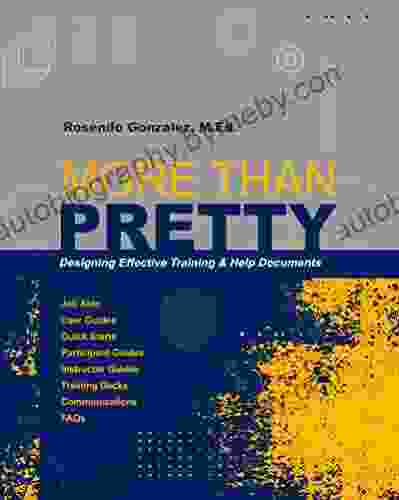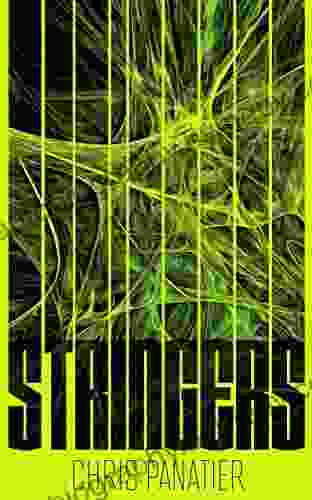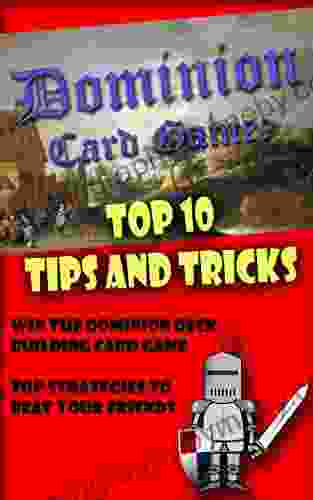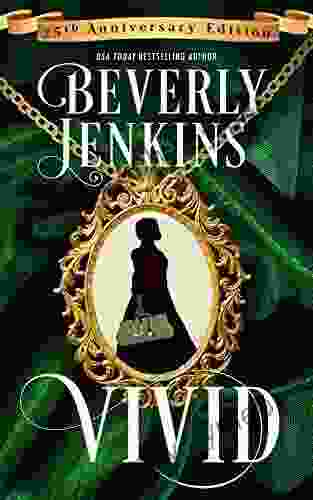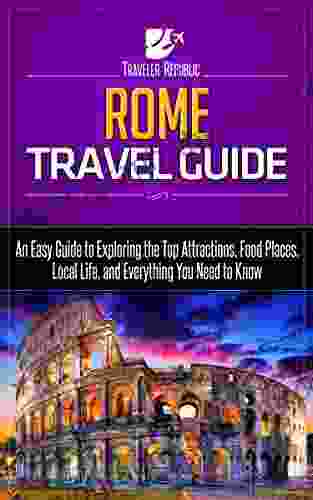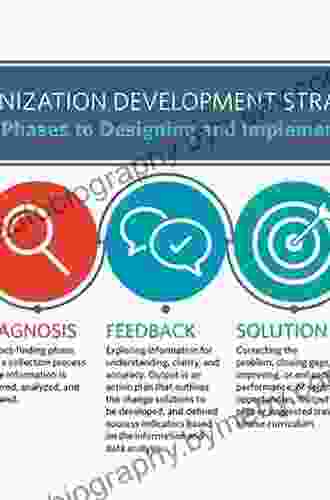Designing Effective Training And Help Documents: A Comprehensive Guide

Training and help documents are essential for any organization that wants to ensure that its employees and customers can use its products and services effectively. Well-designed training and help documents can help users learn new skills, solve problems, and get the most out of their experience with your organization.
However, designing effective training and help documents is not always easy. There are a number of factors to consider, such as the target audience, the purpose of the document, and the best way to present the information.
5 out of 5
| Language | : | English |
| File size | : | 13384 KB |
| Screen Reader | : | Supported |
| Print length | : | 175 pages |
| Lending | : | Enabled |
This guide will provide you with a comprehensive overview of the process of designing effective training and help documents. We will cover everything from understanding your target audience to writing clear and concise content to using visuals and interactive elements to make your documents more engaging.
Understanding Your Target Audience
The first step in designing effective training and help documents is to understand your target audience. Who are these documents intended for? What are their needs and expectations?
Once you understand your target audience, you can tailor your documents to meet their specific needs. For example, if you are writing a training document for new employees, you will need to use simple language and provide step-by-step instructions. If you are writing a help document for experienced users, you can use more technical language and assume that they have some prior knowledge of the product or service.
Determining the Purpose of the Document
The next step is to determine the purpose of the document. What do you want users to learn or do after reading the document?
Once you know the purpose of the document, you can start to organize the content in a logical way. For example, if you are writing a training document on how to use a new software program, you might start with an overview of the program, followed by step-by-step instructions on how to use the most common features.
Writing Clear and Concise Content
One of the most important elements of effective training and help documents is clear and concise writing. Users should be able to understand the information easily and quickly.
Here are some tips for writing clear and concise content:
* Use simple language and avoid jargon. * Use active voice and avoid passive voice. * Keep sentences short and to the point. * Use bullet points and lists to make information easier to read. * Use headings and subheadings to break up the text and make it more readable.
Using Visuals and Interactive Elements
Visuals and interactive elements can help make your training and help documents more engaging and effective.
Here are some examples of visuals and interactive elements that you can use:
* Images * Diagrams * Charts * Graphs * Videos * Quizzes * Simulations
Testing and Evaluating Your Documents
Once you have created your training and help documents, it is important to test and evaluate them to ensure that they are effective.
Here are some ways to test and evaluate your documents:
* Ask users to review the documents and provide feedback. * Conduct usability testing to see how users interact with the documents. * Track the number of times the documents are accessed and used.
Designing effective training and help documents is an important part of any organization that wants to ensure that its employees and customers can use its products and services effectively. By following the tips in this guide, you can create documents that are clear, concise, engaging, and effective.
5 out of 5
| Language | : | English |
| File size | : | 13384 KB |
| Screen Reader | : | Supported |
| Print length | : | 175 pages |
| Lending | : | Enabled |
Do you want to contribute by writing guest posts on this blog?
Please contact us and send us a resume of previous articles that you have written.
 Book
Book Novel
Novel Page
Page Chapter
Chapter Text
Text Story
Story Genre
Genre Reader
Reader Library
Library Paperback
Paperback E-book
E-book Magazine
Magazine Newspaper
Newspaper Paragraph
Paragraph Sentence
Sentence Bookmark
Bookmark Shelf
Shelf Glossary
Glossary Bibliography
Bibliography Foreword
Foreword Preface
Preface Synopsis
Synopsis Annotation
Annotation Footnote
Footnote Manuscript
Manuscript Scroll
Scroll Codex
Codex Tome
Tome Bestseller
Bestseller Classics
Classics Library card
Library card Narrative
Narrative Biography
Biography Autobiography
Autobiography Memoir
Memoir Reference
Reference Encyclopedia
Encyclopedia Evie Litton
Evie Litton Ana T Forrest
Ana T Forrest Amy L Bovaird
Amy L Bovaird Ana Victoria Calderon
Ana Victoria Calderon David Horgan
David Horgan Michael Tan
Michael Tan Andrei Besedin
Andrei Besedin Andy Crouch
Andy Crouch Henry Mintzberg
Henry Mintzberg Colin Campbell
Colin Campbell Stephen Farthing
Stephen Farthing Nurse Michael Alexander
Nurse Michael Alexander Andrea Spalding
Andrea Spalding Ana Mariella Bacigalupo
Ana Mariella Bacigalupo Amy Richau
Amy Richau Scott Reiss
Scott Reiss Andrea Friederici Ross
Andrea Friederici Ross Kathy Wilson
Kathy Wilson Pearl Howie
Pearl Howie Anita Brookner
Anita Brookner
Light bulbAdvertise smarter! Our strategic ad space ensures maximum exposure. Reserve your spot today!
 Allan JamesFollow ·2.3k
Allan JamesFollow ·2.3k Peter CarterFollow ·8k
Peter CarterFollow ·8k Aldous HuxleyFollow ·19.1k
Aldous HuxleyFollow ·19.1k Julio Ramón RibeyroFollow ·6.4k
Julio Ramón RibeyroFollow ·6.4k Warren BellFollow ·12.6k
Warren BellFollow ·12.6k Trevor BellFollow ·14.3k
Trevor BellFollow ·14.3k Christian BarnesFollow ·9.6k
Christian BarnesFollow ·9.6k Stan WardFollow ·16.4k
Stan WardFollow ·16.4k

 Bryce Foster
Bryce FosterCelebrate the Luck of the Irish: Unveiling Saint...
As the verdant hues of spring brush...

 Chase Simmons
Chase SimmonsCody Rodeo: A Photographic Journey into the Heart of the...
Step into the arena of the...

 David Mitchell
David MitchellUnveiling the Enchanting World of Door County Quilts: A...
Step into the Heart of Amish Country in...

 Floyd Powell
Floyd PowellCowboy Chatter: Unraveling the Enigmatic Tales of the Old...
Step into the...
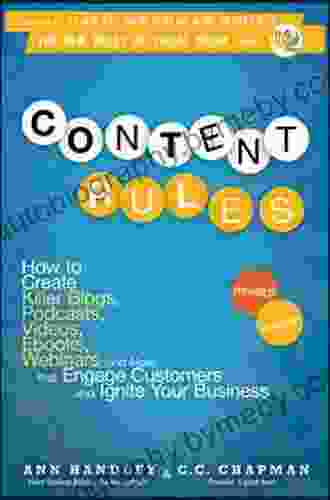
 Ismael Hayes
Ismael HayesUnlock Content Marketing Mastery: How to Create...
In today's digital landscape, content is...

 Boris Pasternak
Boris PasternakMore Than 200 Hardball Questions For The Thinking Fan
The Ultimate Baseball Trivia Challenge Are...
5 out of 5
| Language | : | English |
| File size | : | 13384 KB |
| Screen Reader | : | Supported |
| Print length | : | 175 pages |
| Lending | : | Enabled |


